| |
|
|
|
SPECIAL OFFERING – McKEEVER AND FRAZIER CARTRIDGE
BOXES – VERY NICE SPECIMENS: On occasion when
the opportunity presents, I’m able to pass along a
windfall purchase and these three Indian War era
cartridge boxes are the result of such an occasion. All
three are very decent examples and they are offered here
well below the normal market pricing. Each is described
below with accompanying photographs.
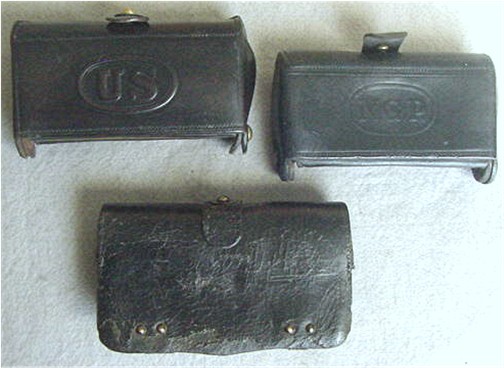 |
|
SECOND PATTERN ROCK ISLAND ARSENAL MCKEEVER
CARTRIDGE BOX: As described in Dorsey’s
Indian War Cartridge Pouches, Boxes and Carbine Boots
on page 66, this .45-70 caliber Second Pattern McKeever
Box with the tool compartment formed in the end panel,
was manufactured at the Rock Island Arsenal.
It is so marked with a
strong, legible stamp in the early, 1874 period
“sunrise” shaped cartouche on the reverse of the closing
tab.
The overall condition of this
piece is very good, with fine smooth leather overall,
and no crazing. All of the seams are intact, the gusset
is intact and supple, and the belt loops and closing tab
are all intact. The closing tab brass reinforcing plate
and both corner staples are present. The interior is in
like condition, but does show some signs of having
carried cartridges. The last loop on the far left of
the bottom row of cartridge loops is split open as can
be seen in the photographs below, but all the other
loops are intact. The leather loop bellows are stamped
with the inspector initials. This is a very nice
specimen which displays quite well. (0311) $75
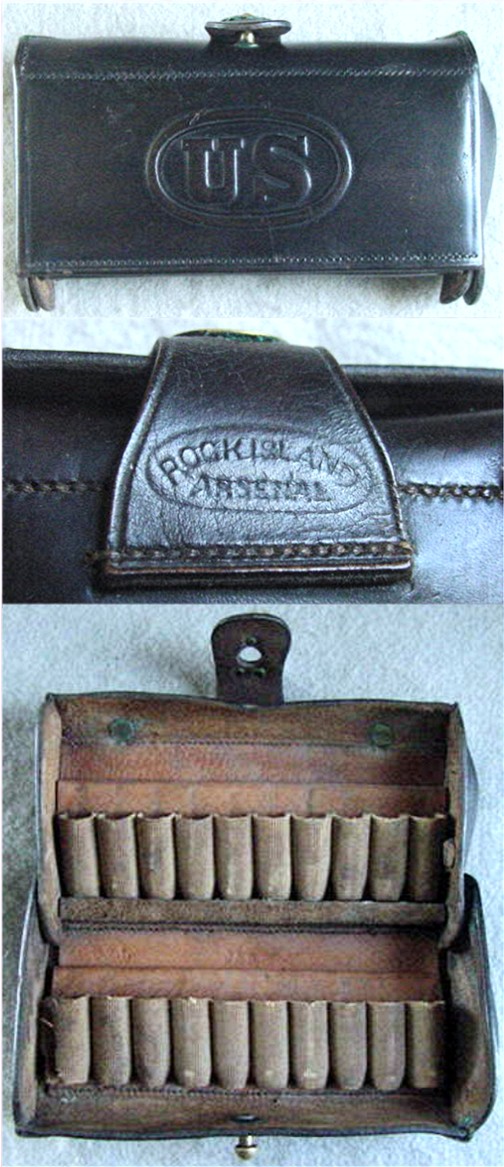 |
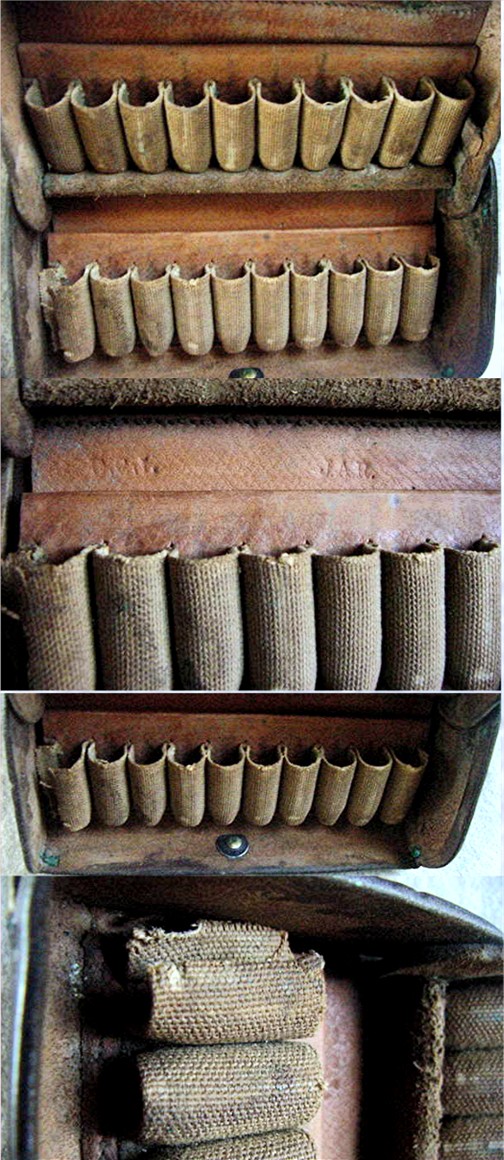 |
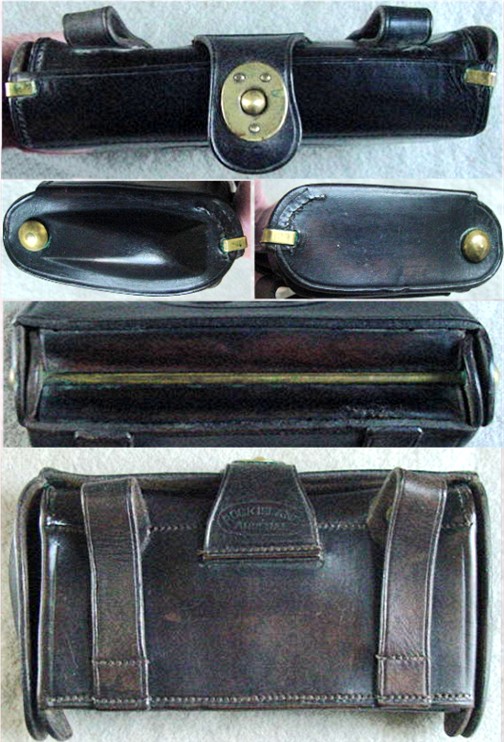 |
|
NATIONAL GUARD OF PENNSYLVANIA SECOND PATTERN
VARIANT MCKEEVER CARTRIDGE BOX: As described in
Dorsey’s Indian War Cartridge Pouches, Boxes and
Carbine Boots on page 88, this .45-70 caliber
National Guard of Pennsylvania Second Pattern Variant
McKeever Box with the tool compartment formed in the end
panel,
was manufactured under a state
procurement contract as indicated by the civilian
maker’s stamp on the closing tab and McKeever Patent
acknowledgment on the cartridge loops bellows. The
overall condition of this piece is very good, with fine
smooth leather overall, with minimal crazing
concentrated on the closing tab. The brass closing tab
escutcheon and corner staples were omitted from this
variant, probably as a cost saving measure. All of the
seams are intact, the gusset is intact and supple, and
the interior is in very good condition, showing some
signs of having carried cartridges, but no damage, wear
or fraying to the canvas loops.
(0312) $70
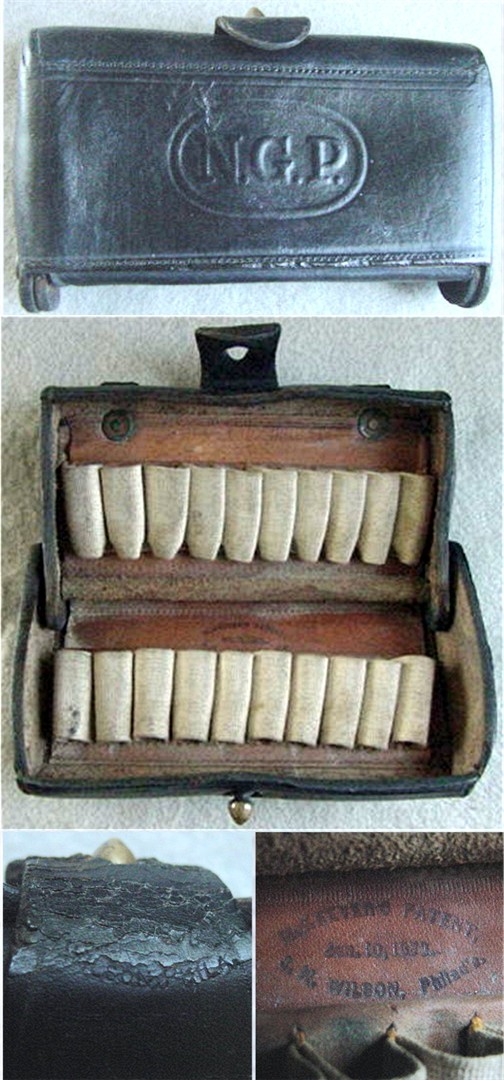 |
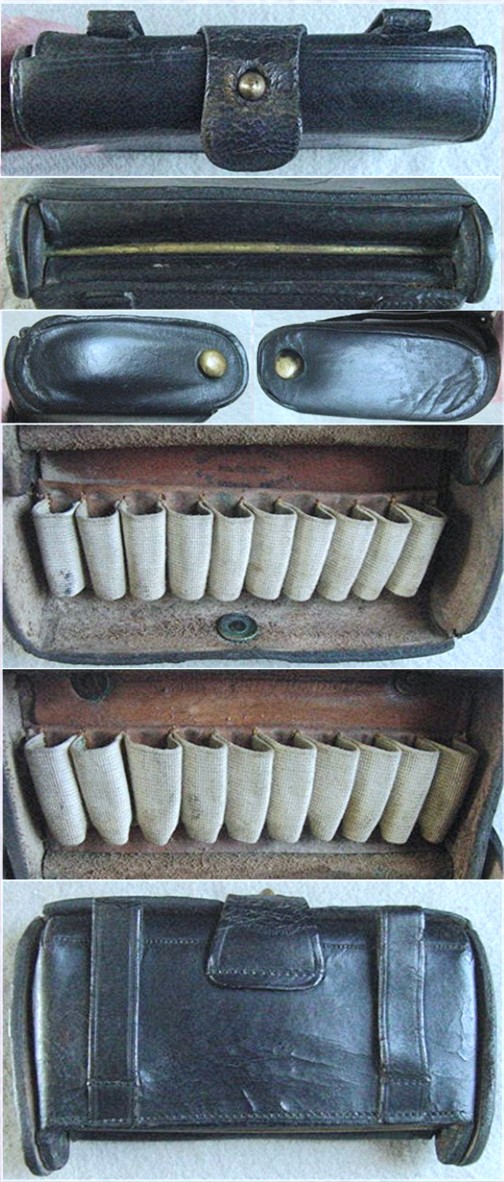 |
|
FRAZIER’S CARTRIDGE BOX: As described in
Dorsey’s Indian War Cartridge Pouches, Boxes and
Carbine Boots, pages 125-131, this Frazier’s Patent
Cartridge Box was issued to National Guard and State
Militia units and is one of the more unusual ammunition
carriers of the period. This example is fitted with a
wooden block designed to hold 18 - .45 caliber rounds,
as opposed to the more common .50 caliber blocks
encountered. The box is in very good condition, with
all seams intact, the belt loops and closing tab fitted
with the brass escutcheon present and intact, and both
brass hinges intact and solidly attached. The leather
surfaces are generally bright with some areas of light
crazing, and some flaking along the bottom edge of the
front cover. Both the maker’s and patent information
stamps are present and fully legible.
The interior of the box
cover bears a unit applied inventory control
identification stencil “1 K 23” indicating the First
Regiment, Company K, soldier or item number 23.
Despite the evidence of issue and use, this Frazier
Cartridge Box presents as a very credible representative
example (0313) $65
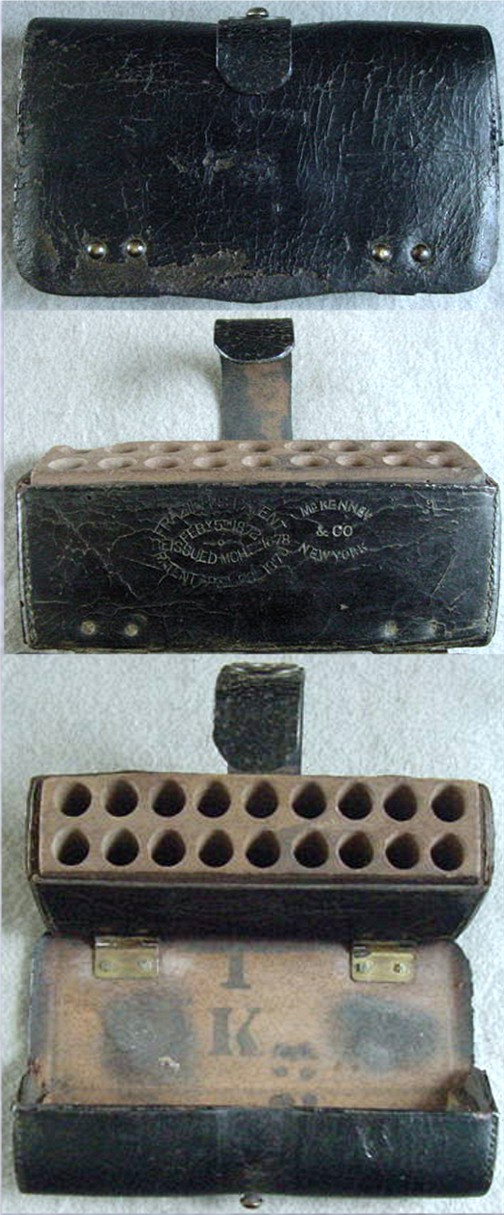 |
|
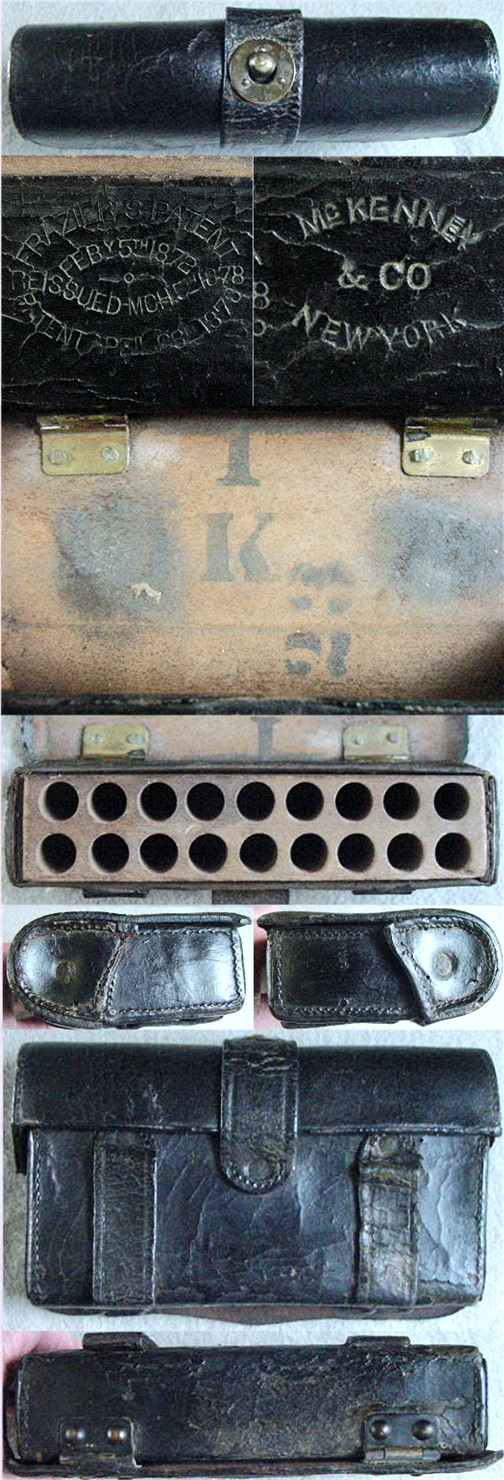 |
|
|
|
|
|
|
|
|
|
|
|
|
|
|
|
|
|
|
|
|

